Submission Deadline:
June 15th, 2025
Notification of Acceptance:
June 30th, 2025
Conference Dates:
July 24-26, 2025
Prof. Dr. Rumen Mironov
off. 1228, fl. 2, bldg. 1
Technical University of Sofia
8 Kliment Ohridski Blvd.
1756 Sofia
Bulgaria
E-mail: namsp2025@gmail.com
Tel: +359 2 965 3283
Contact for China
Editor Chaoming Yang
IRNet China, Wuhan
QQ:2317185350
Tel: 15527861909 (Editor Tang)
6th International Workshop on New Approaches for
Multidimensional Signal Processing
NAMSP 2025
Technical University of Sofia, Sofia, Bulgaria
July 24-26, 2025
Local Information
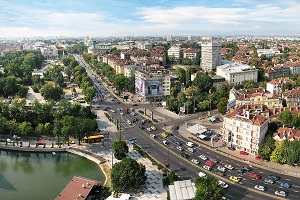 Sofia is the capital of Bulgaria and its largest city. It is a natural economic, logistical, industrial, administrative, academic and cultural center in the country. It is located in the vast Sofia valley and is surrounded by three picturesque mountains: Vitosha, Lyulin and Stara Planina. The Perlovsk and Vladay rivers pass through the whole city, whose river beds enrich the urban landscape through their varied paths. There are mineral springs in four different zones, which have a beneficial effect on the health and mood of the capital residents and guests.
Sofia is the capital of Bulgaria and its largest city. It is a natural economic, logistical, industrial, administrative, academic and cultural center in the country. It is located in the vast Sofia valley and is surrounded by three picturesque mountains: Vitosha, Lyulin and Stara Planina. The Perlovsk and Vladay rivers pass through the whole city, whose river beds enrich the urban landscape through their varied paths. There are mineral springs in four different zones, which have a beneficial effect on the health and mood of the capital residents and guests.
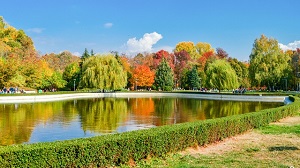 The temperate continental climate contributes to the rich palette of climatic paintings that delight people thoroughout the year. Winter provides attractive conditions for skiing in January and February. Spring brings with it the scent of flowering trees, mainly in April and May, and is extremely suitable for outdoor activities - sports and mass events. The summer, which starts in June and lasts until September, is warm and sunny, and Vitosha Mountain helps it not to be excessively hot and dry, giving the environment a soft and airy atmosphere. The autumn periods are very beautiful with the rich pastoral colors of the trees that prepare for their winter sleep. Temperatures remain pleasant for outdoor walks and sports until early November.
The temperate continental climate contributes to the rich palette of climatic paintings that delight people thoroughout the year. Winter provides attractive conditions for skiing in January and February. Spring brings with it the scent of flowering trees, mainly in April and May, and is extremely suitable for outdoor activities - sports and mass events. The summer, which starts in June and lasts until September, is warm and sunny, and Vitosha Mountain helps it not to be excessively hot and dry, giving the environment a soft and airy atmosphere. The autumn periods are very beautiful with the rich pastoral colors of the trees that prepare for their winter sleep. Temperatures remain pleasant for outdoor walks and sports until early November.
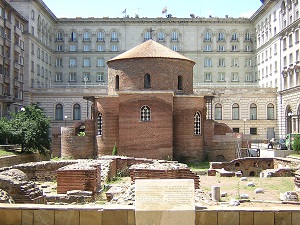 Sofia derives its name from an ancient temple, the center of spirituality in Late Antiquity. There is ample evidence of its occupation as early as the beginning of the Neolithic. Written sources from the ancient Greek period indicate people from the Thracian multitudes - tilatei and treri lived around. Undoubtedly, a large part of the population from that time belonged to the Celtic community. Later, after the third century AD, a monetary system was operating in the city - an element of the highly developed statehood from that period.
Sofia derives its name from an ancient temple, the center of spirituality in Late Antiquity. There is ample evidence of its occupation as early as the beginning of the Neolithic. Written sources from the ancient Greek period indicate people from the Thracian multitudes - tilatei and treri lived around. Undoubtedly, a large part of the population from that time belonged to the Celtic community. Later, after the third century AD, a monetary system was operating in the city - an element of the highly developed statehood from that period.
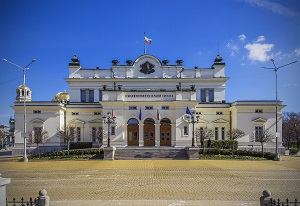 The main institutions that form the government are located in Sofia. Here are the National Assembly, the Presidency, the Council of Ministers, the various types of Courts, the Prosecutor's Office, the Bulgarian National Bank and many others. The city is divided into 16 districts and together with 8 other settlements it makes Sofia Municipality. In connection with Bulgaria's membership in the European Union, many governmental and non-governmental organizations are active on its territory, such as the Association Council with the European Union and the Delegation of the European Commission.
The main institutions that form the government are located in Sofia. Here are the National Assembly, the Presidency, the Council of Ministers, the various types of Courts, the Prosecutor's Office, the Bulgarian National Bank and many others. The city is divided into 16 districts and together with 8 other settlements it makes Sofia Municipality. In connection with Bulgaria's membership in the European Union, many governmental and non-governmental organizations are active on its territory, such as the Association Council with the European Union and the Delegation of the European Commission.
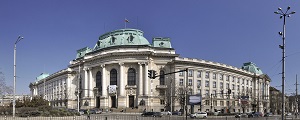 The secondary and higher education systems are extremely well developed. There are more than 260 schools in Sofia, many of which are specifically profiled, including technical ones. More than 100,000 students attend 22 state-accredited universities located in the capital, learning in all fields of human knowledge. One of them is the Technical University - Sofia. Here is also the Bulgarian Academy of Sciences with its rich structure of institutes, as well as the National Library Cyril and Methodius.
The secondary and higher education systems are extremely well developed. There are more than 260 schools in Sofia, many of which are specifically profiled, including technical ones. More than 100,000 students attend 22 state-accredited universities located in the capital, learning in all fields of human knowledge. One of them is the Technical University - Sofia. Here is also the Bulgarian Academy of Sciences with its rich structure of institutes, as well as the National Library Cyril and Methodius.
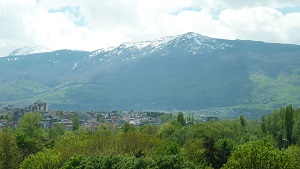 The city offers good conditions for recreation and has lots of sports facilities. The Boris Garden is the largest park in it, with vast wooded areas, small lakes, playgrounds, stadiums and even a beach. Other popular parks are South, West, North and Vrana Park Museum. A few kilometers outside the Southern Suburbs lies Vitosha Mountain - a nature park with extremely valuable and diverse biosphere reserves - Bistrishko and Peat Branishte. The Pancherevo Lake is another great attraction in the area enclosing the city, around which there are several wooded parks, rowing base, rest stations and restaurants. It is ideal place for picnics and vacations.
The city offers good conditions for recreation and has lots of sports facilities. The Boris Garden is the largest park in it, with vast wooded areas, small lakes, playgrounds, stadiums and even a beach. Other popular parks are South, West, North and Vrana Park Museum. A few kilometers outside the Southern Suburbs lies Vitosha Mountain - a nature park with extremely valuable and diverse biosphere reserves - Bistrishko and Peat Branishte. The Pancherevo Lake is another great attraction in the area enclosing the city, around which there are several wooded parks, rowing base, rest stations and restaurants. It is ideal place for picnics and vacations.
 Sofia's rich history also redefines the widespread distribution of religious temples on its territory, monuments, historic buildings, bridges and other landmarks. The two oldest bridges are the Eagles and Lions Bridge, located in the center and enjoying wide popularity. The Sofia Mineral Bath was built in the early 20th century and had a healing effect on Sofia generations before being reconstructed as History Museum of Sofia in 2015. The Central Military Club is an icon in the cultural and historical heritage of the capital. It is a colorful shelter for numerous concerts, exhibitions, meetings, ceremonies and many other events.
Sofia's rich history also redefines the widespread distribution of religious temples on its territory, monuments, historic buildings, bridges and other landmarks. The two oldest bridges are the Eagles and Lions Bridge, located in the center and enjoying wide popularity. The Sofia Mineral Bath was built in the early 20th century and had a healing effect on Sofia generations before being reconstructed as History Museum of Sofia in 2015. The Central Military Club is an icon in the cultural and historical heritage of the capital. It is a colorful shelter for numerous concerts, exhibitions, meetings, ceremonies and many other events.
 Sofia theaters, such as Ivan Vazov National Theater, Tears and Laughter, Theater 199 are the modern successors of the established traditions in Bulgarian satirical art. The National Opera and Ballet, officially declared with a state status in 1922, regularly present classical works by Russian, Bulgarian and Italian composers. The National Museum of History is another center of great cultural importance, together with the National Ethnographic Museum, the National Art Gallery, the Archaeological Institute and Museum, the National Museum of Natural History and others.
Sofia theaters, such as Ivan Vazov National Theater, Tears and Laughter, Theater 199 are the modern successors of the established traditions in Bulgarian satirical art. The National Opera and Ballet, officially declared with a state status in 1922, regularly present classical works by Russian, Bulgarian and Italian composers. The National Museum of History is another center of great cultural importance, together with the National Ethnographic Museum, the National Art Gallery, the Archaeological Institute and Museum, the National Museum of Natural History and others.
You could find more information about Sofia on the following web-sites:
http://sofia-guide.com/
https://wikitravel.org/en/Sofia
https://www.visitsofia.bg/en/
https://www.inyourpocket.com/sofia
https://travellingbuzz.com/sofia-travel-tips-visit-bulgaria/